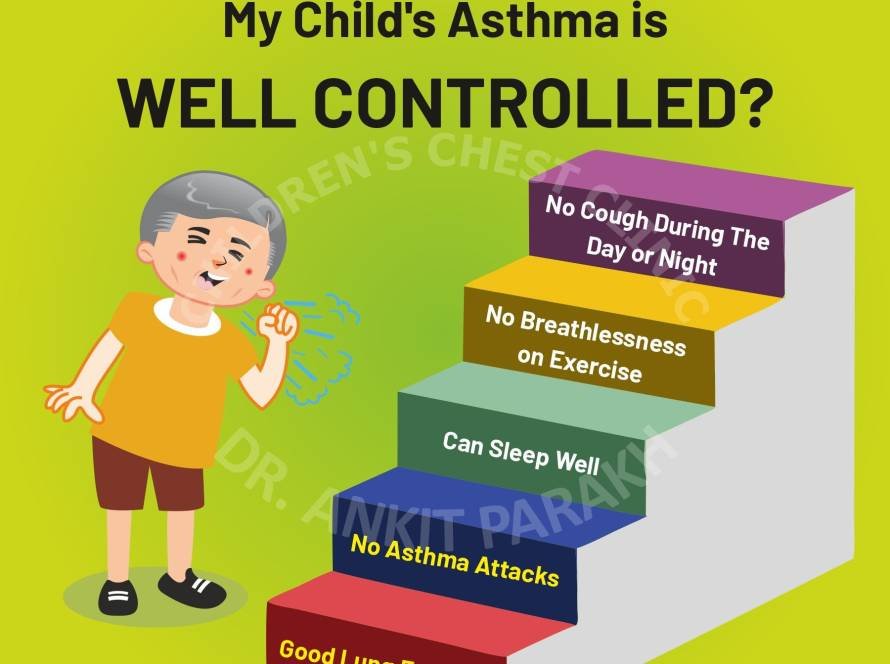How to keep your Asthma under control during winters?
Asthma is a very common respiratory issue seen in children, adolescents and young adults. Asthma leads to swelling and mucus inside the child’s airways. Asthma also causes the muscles around the airways to tighten up causing bronchospasm. Asthma can get worse with various allergens and triggers. In Manu people asthma gets worse in winters.
Why is asthma bad in the winter?
Cold weather can be a tough time for children and young adults with asthma. For many children and young adults, asthma gets more difficult to control during winter months. There are many reasons why asthma is worse in winter months.
The cold and dry air during winters irritate the airways (also called as bronchi) and cause the muscles inside the airways to tighten up also called bronchospasm. This can lead to worsening of symptoms of asthma.
Most children and young adults spend most of the time indoors due to the cold and keep windows closed. While children are indoors, they breathe in more indoor allergens like molds, pet dander and dust mites. In addition they might be getting more triggers like cigarette smoke, agarbatti smoke, etc.
In addition, during winters there are cold and flu viruses going around. These viral respiratory tract infections are an important cause of asthma attacks in children and young adults.
What are the suggested steps to keep Asthma under control during winters?
Below are suggested steps to keep your child’s asthma under control:
- Take your preventer inhaler as prescribed by your pediatric Pulmonologist or allergist. The preventer inhaler stops inflammation from building up in the child’s airways. Preventive inhalers make the child’s airways less sensitive to triggers. Preventive inhalers need to be taken every day throughout the year even if the child feels well.
- Keep your reliever inhaler with you at all times. The reliever inhaler quickly reduces the asthma symptoms if your child gets them at any point of time. Reliever inhaler needs to be carried with you and needs to be taken only if the child gets any symptoms.
- Learn to Use your asthma action plan: Asthma Action Plan is a written document meant to guide you regarding your child’s asthma care. It tells you about what to do if your child’s symptoms get worse.
- Have regular asthma reviews: All children with Asthma should have an asthma review at least once in two to three months with a pediatric Pulmonologist. A regular asthma review helps to decide your child’s treatment appropriate for his condition. It would also be useful to get a breathing test or spirometry to assess the functioning of the child’s lungs. Your allergist or pulmonologist can also perform an Allergy Test which can help you understand your child’s allergens and triggers.
- Reducing Allergen Exposure: Measures to limit and reduce dust mites are always helpful. Pets should be groomed regularly and kept out of bedrooms. Wet mopping is recommended. Running a fan in the bathroom after taking a bath would reduce the mild growth and reduce mold exposure.
- Vaccination: Getting regular flu shots can reduce the risk of getting a bad influenza infection.
If your child is having repeated episodes of wheezing, breathlessness or asthma and is not well controlled in winters consult a pediatric pulmonologist or allergist for proper diagnosis and treatment.







